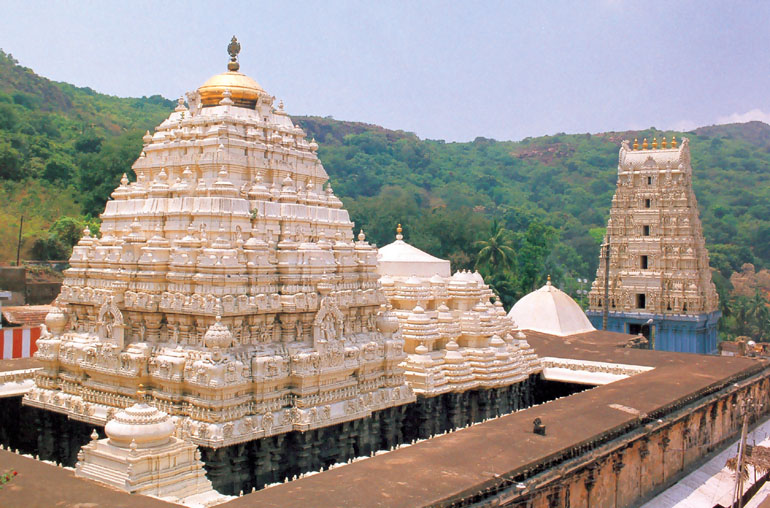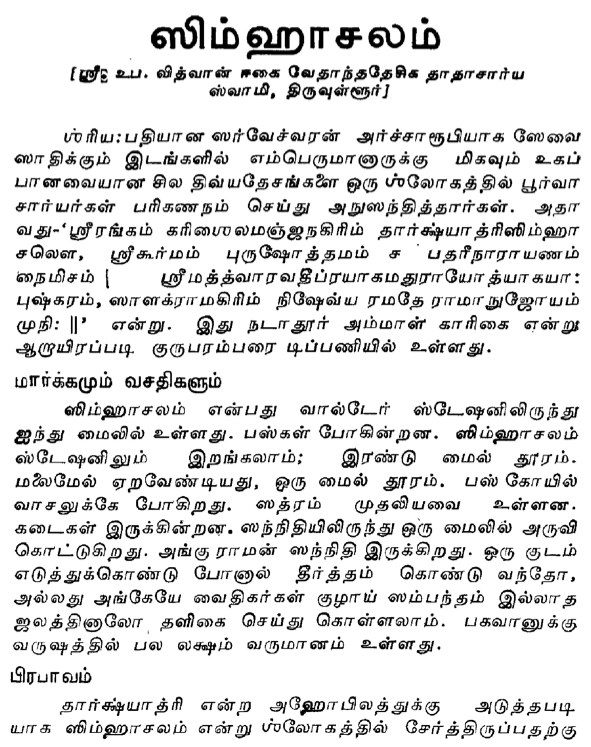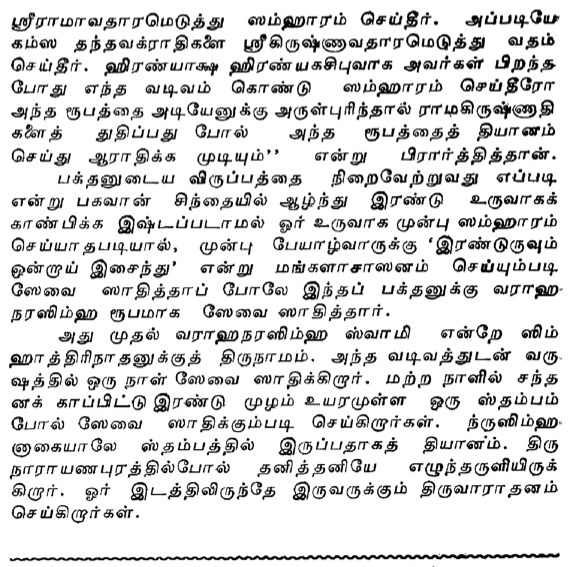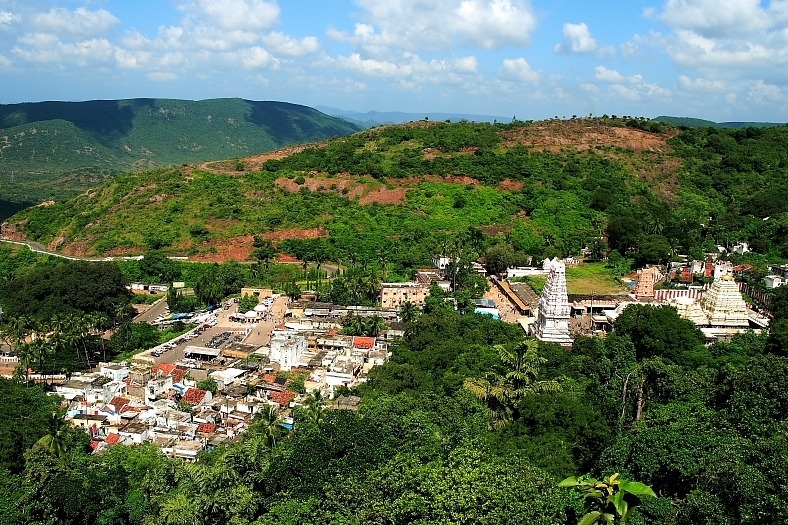The Sthalapuranam of this sthalam is related to Sri Narasimhavathaar and from this, it is evident that this temple is found to be in existence from over of years.. Simhachalam temple is well connected from Vizag city centers and there is a local station stop for trains. Long distance express trains usually do not stop here. From Vizag Railway station it is 45 minutes drive by road and 30 minutes from airport. Frequent buses available locally for hill top. There is a Trekking route available for trekking lovers from Madhavadhara side, two hours climbing to temple premises with steep natural stone steps and a beautiful view of Vizag city and at the other side the temple view from hill top.
Here is a writeup of Stalapuranam about Simhachalam Temple in Andhrapradesh, written by Sri U.Ve.Vidwan Egai VedantaDesika Thatacharya Swami.
SIMHACHALAM (‘ the lion hill’), which rises to about 800 feet about the sea, stands just north of Visakhapatnam. Near the top of the north side of it, in a wooded hollow surrounded by a wide circle of higher ground, is the temple to Narasimha, the man-lion incarnation of Vishnu, which gives the hill its name. This is the most famous and best sculptured shrine in Visakhapatnam, and in its honour number or the people of the district have named Simhachalam, Simhadri, Narasimha and so on. From the hollow in which is stands, a deep glen, watered by a rivulet and clothed with many trees in striking contrast to the bare flanks of the rest of the hill, runs down to the foot of the northern slope, where, about ten miles be road from Visakhapatnam, is a rose-garden which is traditionally declared to have been planted by the well-known Sitarama Raju of Vijayanagaram and is watered from the rivulet.
The Rajas of Vijayanagaram have been wardens of the shrine for over two centuries and have endowed it with land of 11,000 acres for its maintainance. The way up to the temple runs along the glen from near the rose-garden, through terraced fields of pineapples dotted with mango, jack and other trees. It passes up a broad flight of wellkept stone steps, over a thousand in number, on either side of which trees have been planted to give shade and a rill runs in a stone channel to refresh weary pilgrims. At frequent intervals are images of the various. Hindu gods in little niches, and on festival days the steps are lighted from top to bottom, The steps eventually reach the narrow mount of the glen, and here the path is barred by a bold portal called Hanuman’s gate, by the side of which the rivulet which passes down the glen is led in to two pools where pilgrims bathe before they continue the ascent. This gate was apparently part of the fortifications which on former days guarded the temple and other remains of which may be traced on the high ground surrounding it. Tradition says that these included as many as 24 bastions.Passing through Hanuman’s gate, the pilgrim traverses a narrow part of the glen where the rivulet is led through pipes and channels over several artificial cascades surrounded by more sculptures of the gods, and at length reaches the amphitheater in which, on a terrace partly cut of the hill-side, stands the temple itself.
Hiranyakasipu, who thought that the entire world should chant his name as the chief deity and if anyone chants other than his name should be sentenced to death. This was the major order that was proposed by him. Because of fear, all the people started to chant Hiranyakasipu’s name and dedicated poojas towards him instead of doing it to Sriman Narayanan. But, bhaktan Prahaladan, the blessed child of Sriman Narayanan and the real son of Hiranyakasipu, did not chant his father Hiranyakasipu’s name but always expressed his bhakti towards Sri Vishnu. Though his father warned him that he should only follow him as the main deity but not Sriman Narayanan, he didn’t follow and instead he started to follow him very deeply.
This kind of action of Prahaladhan made Hiranyakasipu angry and ordered his soldiers to kill him by throwing him from the top of the mountain. As the order from the king, the soldiers threw Prahaladhan from the top of the mountain and to protect him, the perumal Sriman Narayanan came as Sri Narasimhar and rescued him by moving the mountain and made a small path for Prahaladhan. And, it is said that in the place where the perumal stood to protect Prahaladhan is the place where the temple is built.















பரம பாக்யம் ஸ்வாமின்🙏🙏🙏